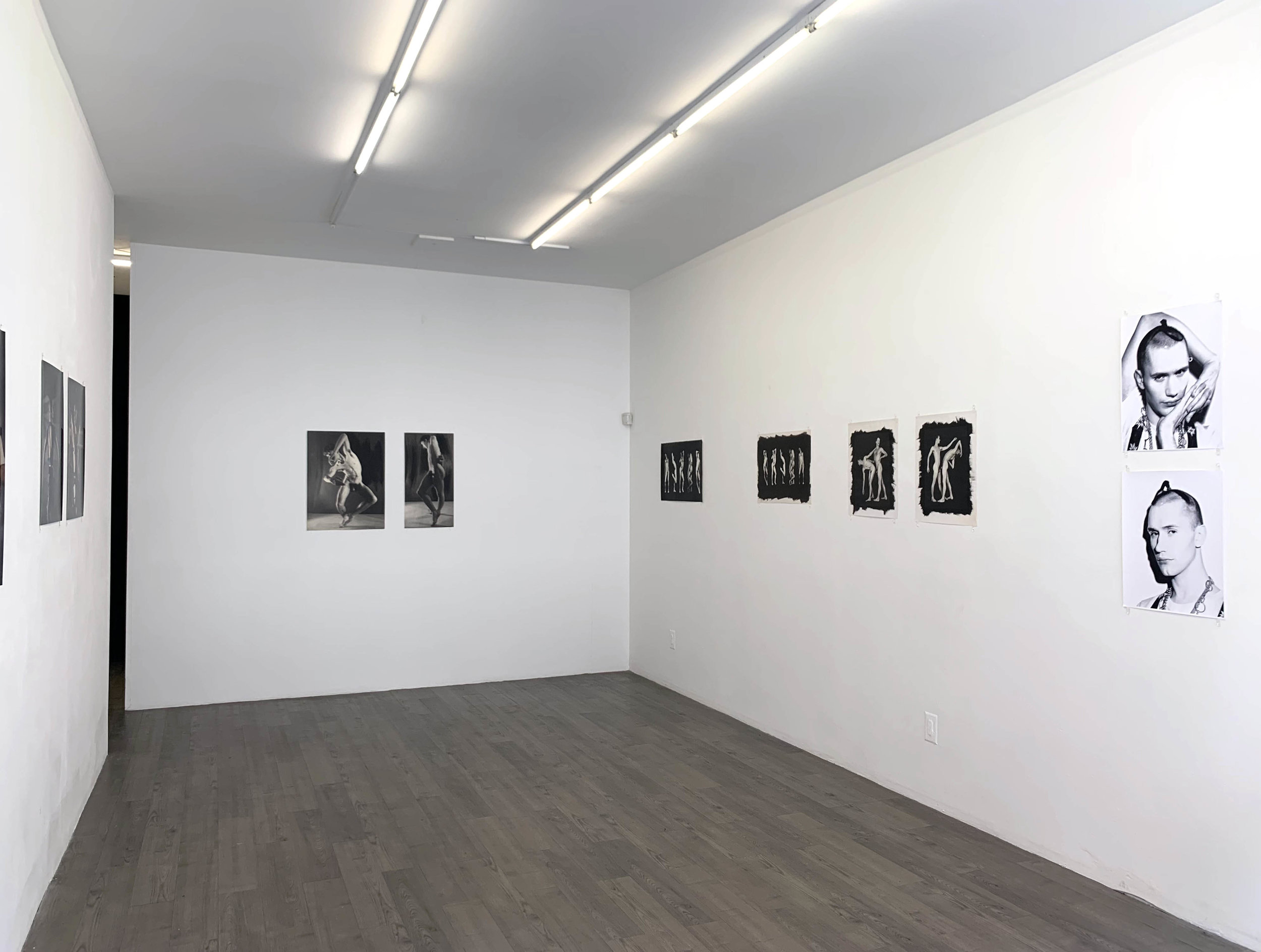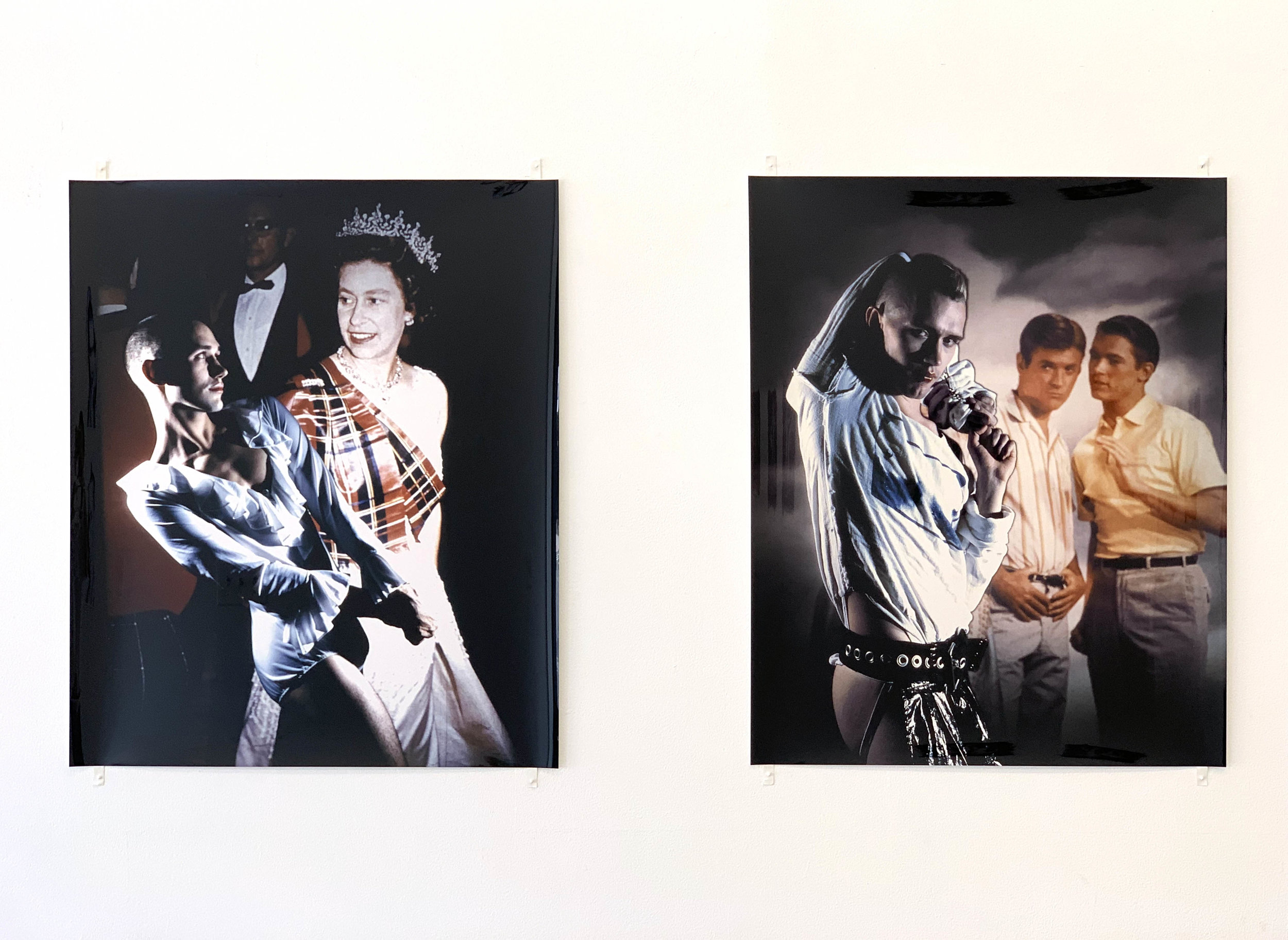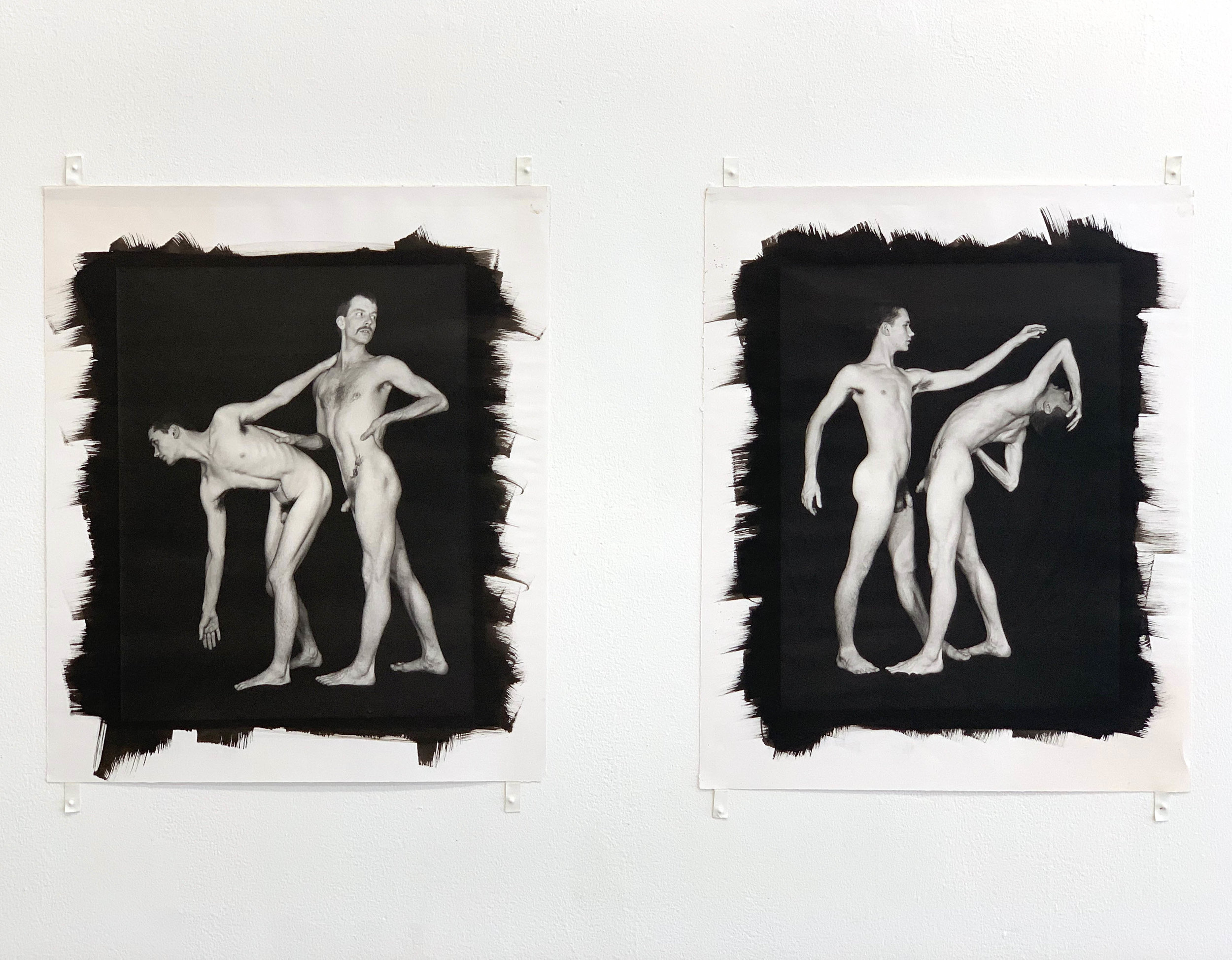DAVID BUCKLAND . Michael Clark
Dancing has a continuity of its own that need not be dependent upon either the rise or fall of sound or the pitch and cry of words. Its force of feeling lies in the physical image, fleeting or static. - Merce Cunningham
Too OT TO And .. offers a glimpse into contemporary dance with the work of David Buckland and Sam Asaert.
DAVID BUCKLAND . solo exhibition . Michael Clark
In David Buckland's case Too OT TO addresses the lineage of artistic endeavor that spans the moment in time of the diversified punk subculture of 1980's London, right before the culture became coarser and more reactionary. It was a time of social, cultural and political counterrevolution, during which the underground was a catch-all sobriquet for a community of likeminded anti-establishment, anti-war individuals. Peace, exploring a widened area of consciousness, love and sexual experimentation was seen as more worthy of attention than entering the rat race and leading a consumerist lifestyle. Everything Thatcherism held dear in its drive to roll back the progression of the postwar years, was forcefully rejected with the can-do attitude of punk. A large, disaffected minority operating in music, dance, film TV, etc ... was racially and sexually inclusive, experimental and challenging, and opposed to the rising tide of commercialization and conspicuous consumption.
During this time, David Buckland collaborated with dancer and choreographer Michael Clark on a substantial body of work. Buckland's exhibition consists of photographs that have rarely been seen, as well as images that had never been printed before. The work ranges from Michael Clark's time at the Ballet Rambert (1979-1981), over his time at London's Riverside Studios as resident choreographer (1982), through the start of his own dance company (1984).
Despite the clear and sharp impact of Buckland's photographs, the work stems from a profound complexity of vision. Each image tends to represent and project, all of the things it preceded. When looking at The New Puritan, for example, the viewer becomes simultaneously aware of putative causes and particular results.
The artist's astonishing black and white portraits of Clark omit a striking tenderness. Isolated, intimate, naked, they often reveal an ambiguous relation to time as well as to space. Each in a different way are considered as flexible and indeterminate. Buckland's photographs imply the entire continuum of movement from which the chosen images emanate. To a large extent, the intensity of the work arises from the contradiction between dance - kinetic, operational, selfconsuming - and the image - permanent, fixed, non-evolutive. The first is process, the second is completion.
Clark is photographed in the circumstances of a formal exercise, the eternal physical exploration that allows him to subordinate body boundaries to the demands of his art. At the same time, the viewer is fully aware that these limitations, vulnerability, sex, sexuality, are also indicative of their fundamental value as human beings. The empathy awakened by bodies whose beauty is made unavoidable by its intimate, often astonishing exhibition, only highlights the ambiguity of the relations between these purely human qualities and the discipline of the art of the dancer.
As Buckland's work testifies, what is interesting is not mere routine, but the broader and more mysterious experience in which we are all permanently engaged, the life that simultaneously strikes our senses and our power to comprehension.
Clark led his company of dancers in an explosive post-punk spectacular with the sounds of bands like The Fall and Laibach and the glittering tongue-in-cheek designs by Leigh Bowery, Bodymap (David Holah, Stevie Stewart) and Trojan (Gary Barnes). A series of lurid color photographs reference Clark's taste for the extreme in dance, music and design. Dressed in bright yellow Louis XIV meets looney tunes' Yosemite Sam musketeers outfits, the choreographer is flanked by non-dancers David Holah and Leigh Bowery (who had major parts in his choreographies) and highly trained but individually distinctive dancers Ellen van Schuylenburch, Amanda King and Dawn Hartley, featured as three queens.
Far from relaying too much on the good looks and canny fashion sense of his counterculture subject, Buckland identified how youth movements find substance in and are characterized by style. He recognized early on that Clark was a talent that leapt above the hype.
Known equally well for his stage designs and innovative photography David Buckland (°1949 London) was a student at the London College of Printing 1967-70 and had his first solo exhibition in 1982 at the Northern Arts Gallery, Newcastle. Since then, he has had numerous international exhibitions including solo exhibitions at the Pompidou Centre in Paris, The National Portrait Gallery in London and the Espace Photo, Paris. His work is included in, amongst others, the permanent collections of the National Portrait Gallery, London, the Centre Georges Pompidou, Paris and the Metropolitan Museum of New York.
In 2001, Buckland created the international Cape Farewell project, which brings artists, visionaries, scientists and educators together to build an international collective awareness and the cultural response to climate disruption. In 2009, the artist curated eARTh for the Royal Academy, London, followed by a number of curated exhibitions such as Carbon 12 for Paris, 2012 and Carbon 13 for the Ballroom, Marfa Texas, 2012.
Buckland produced the films Art from the Arctic, 2006 for the BBC and Burning Ice, 2010 for Sundance. His current works enable events to be created, performed and then recorded through lens-based technology. The recorded information is then transformed and manifested through process to have the physicality and emotional presence of a tactile object.

















